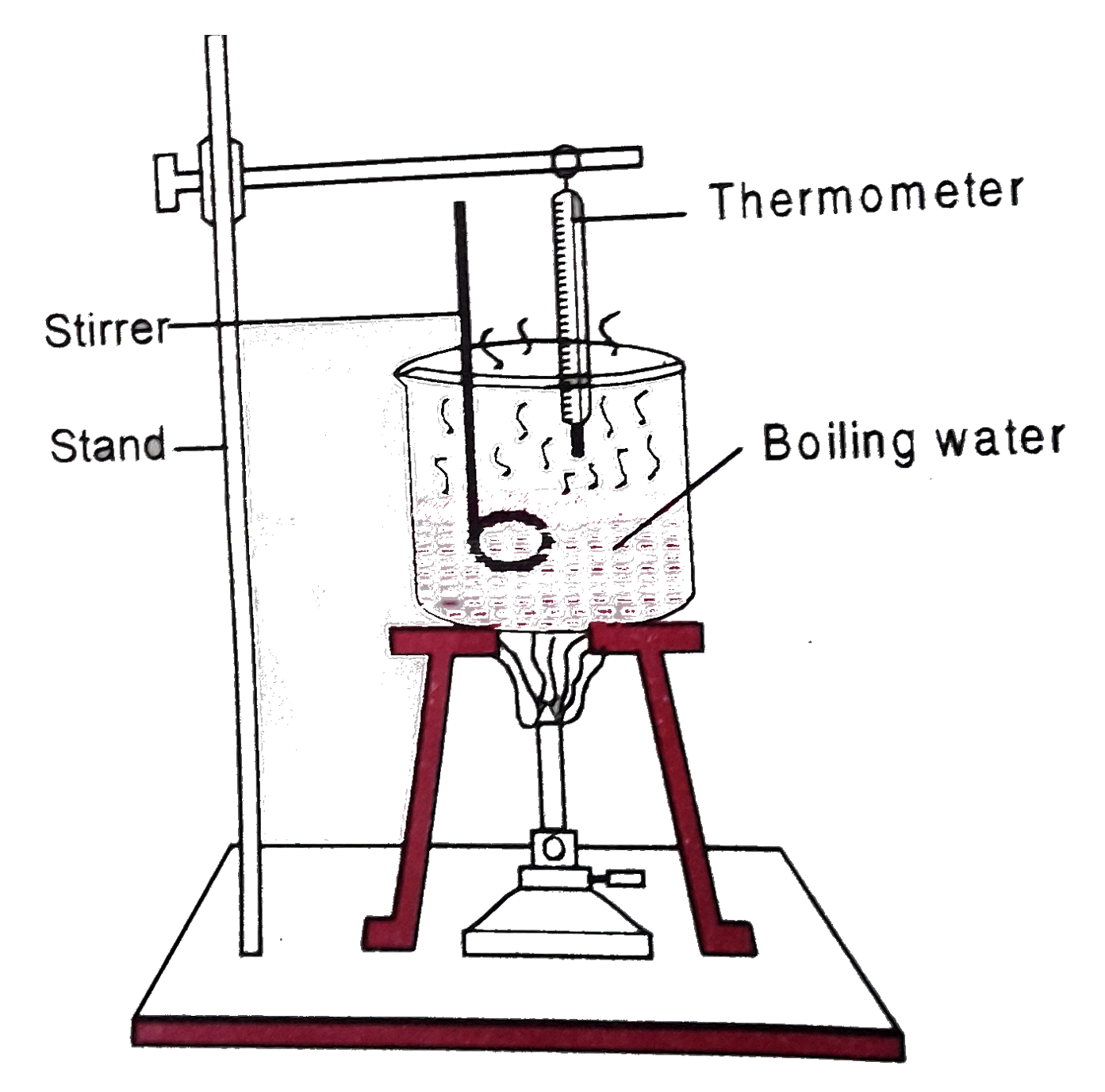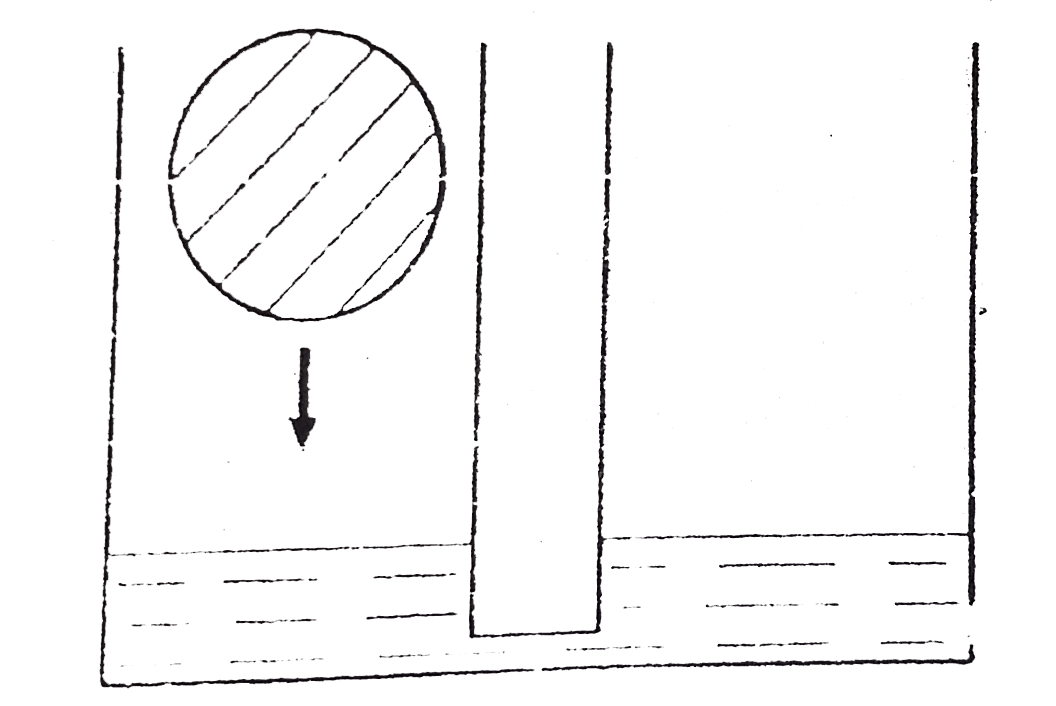A teacher one day pointed out to his students the peculiar fact that water is a unique liquid which freezes exactly at 0∘C.and boils exactly at 100∘C. He asked the students to find the correct statement based on this fact.
Water dissolved anything however sparingly the dissolution may be
Water is a polar molecule
Boiling and freezing temperatures of water were used to define a temperature scale
Liquid water is denser than ice
The correct Answer is:C
To solve the question regarding the unique properties of water, we need to analyze the statements provided and determine which one is correct based on the information given about water freezing at 0°C and boiling at 100°C.
1. Understanding the Properties of Water:
- Water freezes at 0°C and boils at 100°C under standard atmospheric pressure. This is a fundamental characteristic of water.
2. Analyzing the Options:
- Option 1: "Water dissolves anything, however sparingly the dissolution may be."
- This statement is not accurate. While water is known as a "universal solvent," it does not dissolve everything. Therefore, this option is incorrect.
- Option 2: "Water is a polar molecule."
- This statement is true, as water is indeed a polar molecule. However, it does not directly relate to the freezing and boiling points mentioned in the question. Thus, this option is not the correct answer to the question asked.
- Option 3: "Boiling and freezing temperatures of water were used to define a temperature scale."
- This statement is correct. The Celsius temperature scale is defined based on the freezing point (0°C) and boiling point (100°C) of water at standard atmospheric pressure. This directly relates to the context of the question.
- Option 4: "Liquid water is denser than ice."
- While this statement is true, it does not directly relate to the freezing and boiling points of water. Therefore, it is not the correct answer to the question.
3. Conclusion:
- Based on the analysis, the correct statement is Option 3: "Boiling and freezing temperatures of water were used to define a temperature scale."
Final Answer:
The correct statement is: Boiling and freezing temperatures of water were used to define a temperature scale.
- Water freezes at 0°C and boils at 100°C under standard atmospheric pressure. This is a fundamental characteristic of water.
- Option 1: "Water dissolves anything, however sparingly the dissolution may be."
- This statement is not accurate. While water is known as a "universal solvent," it does not dissolve everything. Therefore, this option is incorrect.
- Option 2: "Water is a polar molecule."
- This statement is true, as water is indeed a polar molecule. However, it does not directly relate to the freezing and boiling points mentioned in the question. Thus, this option is not the correct answer to the question asked.
- Option 3: "Boiling and freezing temperatures of water were used to define a temperature scale."
- This statement is correct. The Celsius temperature scale is defined based on the freezing point (0°C) and boiling point (100°C) of water at standard atmospheric pressure. This directly relates to the context of the question.
- Option 4: "Liquid water is denser than ice."
- While this statement is true, it does not directly relate to the freezing and boiling points of water. Therefore, it is not the correct answer to the question.
- Based on the analysis, the correct statement is Option 3: "Boiling and freezing temperatures of water were used to define a temperature scale."
The correct statement is: Boiling and freezing temperatures of water were used to define a temperature scale.
Topper's Solved these Questions
- SOLUTIONSBook:RESONANCE ENGLISHChapter:SOLUTIONSExercise:Advabced Level Problems (PART-2)
Explore 35 Videos
- SOLUTIONSBook:RESONANCE ENGLISHChapter:SOLUTIONSExercise:EXERCISE-3(PART-3)
Explore 30 Videos
- SOLUTION AND COLLIGATIVE PROPERTIESBook:RESONANCE ENGLISHChapter:SOLUTION AND COLLIGATIVE PROPERTIESExercise:PHYSICAL CHEMITRY (SOLUTION & COLLIGATIVE PROPERTIES)
Explore 52 Videos
- STEREOISOMERISMBook:RESONANCE ENGLISHChapter:STEREOISOMERISMExercise:EXERCISE (PART III : PRACTICE TEST-2 (IIT-JEE (ADVANCED PATTERN))
Explore 23 Videos
Similar Questions
Mohan was asked by his teacher to determine the boiling point of a liquid. He set up the apparatus as shown in the figure. He recorded the boiling point of the liquid as 140∘C and reported the reading to this teacher. The teacher asked him to repeat the experiment after dipping the bulb of the thermometer in the liquid and also placing the beaker on a tripod stand covered with a wire gauze. After reading this narration, answer the following question :
(i) Was the reading taken by the student correct ?
(ii) What was the necessity of wire gauze?
(iii) How did teacher help the student?
(iv) What is teh value based information associated with this?

View SolutionA clerk was asked to mail three report cards to three students. He addresses three envelopes but unfortunately paid no attention to which report card be put in which envelope. What is the probability that exactly one of the students received his or her own card?
View Solution
Knowledge Check
The Harrisburg Recreation Center recently changed its hours to open 1 hour later and close 3 hours later than it had previously. Residents of Harrisburg age 16 or older were given a survey and 560 residents replied. The survey asked each resident his or her student status (high school, college, or nonstudent) and what he or she thought about the change in hour (approve, disapprove, or no opinion). The results are summarized in the table below.

After constructing the table, it was discovered that the student status of 15 residents who replied that they approved had been incorrectly classified as nonstudents. After correcting the errors, exactly 60% of the college students had replied that they approved. To the nearest 1%, what percent of high school students replied that they approved?A0.6B0.67C0.7D0.75
A ray of light travelling with a speed c leaves point 1 shown in figure and is reflected to point 2. The ray strikes the reflecting surface at a distance x from point 1. According to Fermat's principle of least time, among all possible paths between two points , the one actually taken by a ray of light is that for which the time taken is the least (In fact there are some cases in which the time taken by a ray is maximum rather than a minimum).
_S01_058_Q01.png)
Find the time for the ray to reach from point 1 to point 2.
View SolutionIn two identical communicating vessel we poured water (see picture). In one of them we put an ice ball of volume V=100cm3 which gets exactly half immersed in the water. The density of water ρw=1000kg/m3 the density of ice ρi=900kg/m3

Select the correct statement (s). Soon after placing the ice ball in left vessel.
View SolutionAn inquistive student, determined to test the law of gravity for himself, walks to the top of a building og 145 floors, with every floor of height 4 m, having a stopwatch in his hand (the first floor is at a height of 4 m from the ground level). From there he jumps off with negligible speed and hence starts rolling freely. A rocketeer arrives at the scene 5 s later and dives off from the top of the building to save the student. The rocketeer leaves the roof with an initial downward speed v0. In order to catch the student at a sufficiently great height above ground so that the rocketeer and the student slow down and arrive at the ground with zero velocity. The upward acceleration that accomplishes this is provided by rocketeer's jet pack, which he turns on just as he catches the student, before the rocketeer is in free fall. To prevent any discomfort to the student, the magnitude of the acceleration of the rocketeer and the student as they move downward together should not exceed 5 g.
Just as the student starts his free fall, he presses the button of the stopwatch. When he reaches at the top of 100th floor, he has observed the reading of stopwatch as 00:00:06:00 (hh:mm:ss:100 th part of the second). Find the value of g. (correct upt ot two decimal places).
View SolutionEach question has four choices a,b,c and d out of which only one is correct. Each question contains Statement 1 and Statement 2. Make your answer as: If both the statements are true and Statement 2 is the correct explanation of statement 1. If both the statements are True but Statement 2 is not the correct explanation of Statement 1. If Statement 1 is True and Statement 2 is False. If Statement 1 is False and Statement 2 is True. It is given that a≻,b>0,c>0anda+b+c=abc Statement 1: All of the three numbers cannot be less than √3. Statement 2: In ABC. tanA+tanB+tanC=tanAtanBtanC
View SolutionThe vapour pressure of a solvent in a solution is lower than that of pure solvent, at the same temperature. A higher temperature is needed to raise the vapour pressure up to the atmospheric pressure, when boiling begins. However, increase is small, like 0.1molkg−1 aqueous sucrose solution boils at 100.05∘C.
Sea water, an aqueous solution, which is rich in Na+ and Cl− ions, freezes about 1∘C lower than frozen water. At the freezing point of a pure solvent, the rates at which two molecules stick together to form the solid and leave it to return to liquid state are equal when solute is present. Fewer solvent molecules are in contact with surface of solid. However, the rate at which the solvent molecules leave the surface of solid remains unchanged. That is why temperature is lowered to restore the equilibrium. The freezing point depression in an ideal solution is proportional to molality of the solute.
Whene 250 m,g of eugenol is added to 100 gm of camphor (Kf=37.9), it lowered the freezing point by 0.62∘C, the molar mass of eugenol is
View SolutionA student performs an experiment to determine how the range of a ball depends on the velocity with which it is projected. The "range" is the distance between the points where the ball lends and from where it was projected, assuming it lands at the same height from which it was projected. It each trial, the student uses the same baseball, and launches it at the same angle. Table shows the experimental results.
∣∣ ∣ ∣ ∣ ∣ ∣∣TrailLaunch speed(m/s)Range(m)110822031.833070.7440122.5∣∣ ∣ ∣ ∣ ∣ ∣∣
Based on this data, the student then hypothesizes that the range, R, depends on the initial speed v0 according to the following equation : R=Cvn0, where C is a constant and n is another constant.
The student speculates that the constant C depends on :-
(i) The angle at which the ball was launched (ii) The ball's mass (iii) The ball's diameter
If we neglect air resistance, then C actually depends on :-
View SolutionThe vapour pressure of a solvent in a solution is lower than that of pure solvent, at the same temperature. A higher temperature is needed to raise the vapour pressure up to the atmospheric pressure, when boiling begins. However, increase is small, like 0.1molkg−1 aqueous sucrose solution boils at 100.05∘C.
Sea water, an aqueous solution, which is rich in Na+ and Cl− ions, freezes about 1∘C lower than frozen water. At the freezing point of a pure solvent, the rates at which two molecules stick together to form the solid and leave it to return to liquid state are equal when solute is present. Fewer solvent molecules are in contact with surface of solid. However, the rate at which the solvent molecules leave the surface of solid remains unchanged. That is why temperature is lowered to restore the equilibrium. The freezing point depression in an ideal solution is proportional to molality of the solute.
The freezing point iof a 5% by mass CH3COOH (aq.) solutin is −1.8∘C. Th vasn't Hoff factor is (Kf of water =1.86)
View Solution